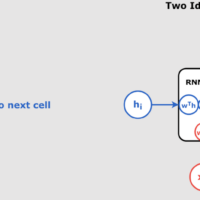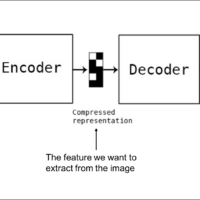Understanding Non-Linearity in Neural Networks Understanding Non-Linearity in Neural NetworksNon-linearity in neural networks is essential for solving complex tasks where the data is not linearly separable. This blog post explains why hidden layers and non-linear activation functions are necessary, using the XOR problem as an example. What is Non-Linearity?Non-linearity in neural networks allows the model to learn and represent more complex patterns. In the context of decision boundaries, a non-linear decision boundary can bend and curve, enabling the separation of classes that are not linearly separable. Role of Activation FunctionsThe primary role of an activation function is to introduce non-linearity into the neural network. Without non-linear activation functions, even networks with multiple layers would behave like a single-layer network, unable to learn complex patterns. Common non-linear activation functions include sigmoid, tanh, and ReLU. Role of Hidden LayersHidden layers provide the network with additional capacity to learn complex patterns by applying a series of transformations to the input data. However, if these transformations are linear, the network will still be limited to linear decision boundaries. The combination of hidden layers and non-linear activation functions enables the network to learn non-linear relationships and form non-linear decision boundaries. Mathematical Explanation Without Hidden LayersA single-layer neural network (perceptron) computes the output as: Where: is the input vector. is the weight vector. is the bias. is the activation function (e.g., sigmoid). For the decision boundary: This is a linear equation, so the decision boundary is a straight line. With Hidden LayersA neural network with one hidden layer computes the output as: Where: are the weights and biases for the hidden layer. are the weights and biases for the output layer. and are activation functions (e.g., tanh). The non-linear activation function introduces non-linearity, enabling the network to learn complex patterns and create non-linear decision boundaries. Understanding Non-Linearity in Neural Networks Understanding Non-Linearity in Neural Networks Example: XOR Problem The XOR problem is a classic example of a non-linearly separable dataset. We will train a neural network with and without hidden layers to demonstrate how decision boundaries are formed. Code with Hidden Layer import numpy as np import matplotlib.pyplot as plt from sklearn.neural_network import MLPClassifier # Define the XOR dataset X = np.array([[0, 0], [0, 1], [1, 0], [1, 1]]) y = np.array([0, 1, 1, 0]) # Train a neural network mlp = MLPClassifier(hidden_layer_sizes=(2,), activation='tanh', max_iter=10000, random_state=42) mlp.fit(X, y) # Plot the decision boundary def plot_decision_boundary(model, X, y, title): x_min, x_max = X[:, 0].min() – 0.5, X[:, 0].max() + 0.5 y_min, y_max = X[:, 1].min() – 0.5, X[:, 1].max() + 0.5 xx, yy = np.meshgrid(np.arange(x_min, x_max, 0.01), np.arange(y_min, y_max, 0.01)) Z = model.predict(np.c_[xx.ravel(), yy.ravel()]) Z = Z.reshape(xx.shape) plt.contourf(xx, yy, Z, alpha=0.8, cmap=plt.cm.Paired) plt.scatter(X[:, 0], X[:, 1], c=y, edgecolors='k', cmap=plt.cm.Paired) plt.title(title) plt.xlabel('x1') plt.ylabel('x2') plt.show() plot_decision_boundary(mlp, X, y, "Neural Network Decision Boundary") Code Without Hidden Layer from sklearn.linear_model import LogisticRegression # Train a logistic regression model log_reg = LogisticRegression() log_reg.fit(X, y) # Plot decision boundaries plot_decision_boundary(log_reg, X, y, "Logistic Regression Decision Boundary") Analysis With Hidden Layer: The network creates a non-linear decision boundary, enabling it to solve the XOR problem. The hidden layer and activation function introduce the non-linearity required. Without Hidden Layer: The logistic regression model produces a linear decision boundary, failing to separate the XOR dataset correctly. Comparison Table Input Hidden Layer Outputs () Output () (1, 0) (0.462, -0.462) 0.5 (0, 1) (0.462, -0.462) 0.5 (0, 0) (0, 0) 0.5 (1, 1) (0.762, -0.762) 0.5 Conclusion The combination of hidden layers and non-linear activation functions allows neural networks to…



